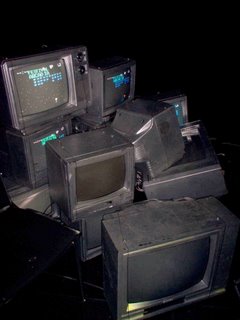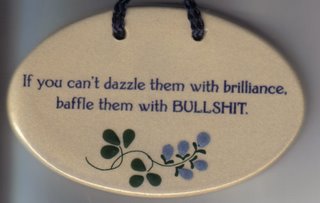CFP: She's Such a GeekI could think of a few people who would be interested in this =)
-------------------------------------------
CFP: She's Such a Geek
An Anthology by and for Women Obsessed with Computers, Science, Comic Books, Gaming, Spaceships, and Revolution
Slated for Fall 2006
Geeks are taking over the world. They make the most popular movies and games, pioneer new ways to communicate using technology, and create new ideas that will change the future. But the stereotype is that only men can be geeks. So when are we going to hear from the triumphant female nerds whose stories of outer space battles will inspire generations, and whose inventions will change the future? Right now.
Female geeks are busting out of the labs and into the spotlight. They have the skills and knowledge that can inspire social progress, scientific breakthroughs, and change the world for the better, and they're making their voices heard, some for the first time, in Annalee Newitz and Charlie Anders' book She's Such a Geek. This anthology will celebrate women who have flourished in the male-dominated realms of technical and cultural arcana. We're looking for a wide range of personal essays about the meaning of female nerdhood by women who are in love with genomics, obsessed with blogging, learned about sex from Dungeons and Dragons, and aren't afraid to match wits with men or computers. The essays in She's Such a Geek will explain what it means to be passionately engaged with technical or obscure topics ˜ and how to deal with it when people tell you that your interests are weird, especially for a girl. This book aims to bust stereotypes of what it means to be a geek, as well as what it means to be female.
More than anything, She's Such a Geek is a celebration and call to arms: it's a hopeful book which looks forward to a day when women will pilot spaceships, invent molecular motors, design the next ultra-tiny supercomputer, write epics, and run the government.
We want introspective essays that explain what being a geek has meant to you. Describe how you've fought stereotypes to be accepted among nerds. Explore why you are obsessed with topics and ideas that are supposed to be "for boys only." Tell us how you felt the day you realized that you would be devoting the rest of your life to discovering algorithms or collecting comic books. We want strong, personal writing that is also smart and critical. We don't mind if you use the word "fuck," and we don't mind if you use the word "telomerase." Be celebratory, polemical, wistful, angry, and just plain dorky.
Possible topics include:
· what turned you into a geek
· your career in science, technology, or engineering
· growing up geeky
· being a geek in high school today
· battling geek stereotypes (i.e racial stereotypes and geekdom, culturalanalysis of geek chic and the truth about nerds, the idea that women have to choose between being sexually desirable and smart, stereotypes about geek professions such as computer programmers)
· sex and dating among geeks
· science fiction fandom
· role-playing game or comic-book subcultures
· the joys of math
· blogging or videogames
· female geek bonding
· geek role models for women
· feminist commentary on geek culture
· women's involvement in DiY science and technology groups
· Stories from women involved in geek pop and underground cultures. These might include comic book writers, science fiction writers, electronic musicmusicians, and women interested in the gaming world.
· women's web networks and web zine grrrl culture
· Issues of sexism in any or all of the above themes
Editors: Annalee Newitz and Charlie Anders are geeky women writers. Annaleeis a contributing editor at Wired magazine and writes the syndicated column Techsploitation. Charlie is the author of Choir Boy (Soft Skull Press) and publisher of other magazine.
Publisher: Seal Press, an imprint of Avalon Publishing Group, publishes groundbreaking books by and for women in a variety of topics.
Deadline: January 15, 2006
Length: 3,000-6,000 words
Format: Essays must be typed, double-spaced, and paginated. Please include your address, phone number, email address, and a short bio on the last page. Essays will not be returned.
Submitting: Send essay electronically as a Document or Rich Text Format file to Annalee Newitz and Charlie Anders at
sheissuchageek@gmail.com.
Payment: $100 plus two books
Reply: Please allow until February 15 for a response. If you haven't received a response by then, please assume your essay has not been selected. It is not possible to reply to every submission personally.
 Arcadia Image
Arcadia Image

